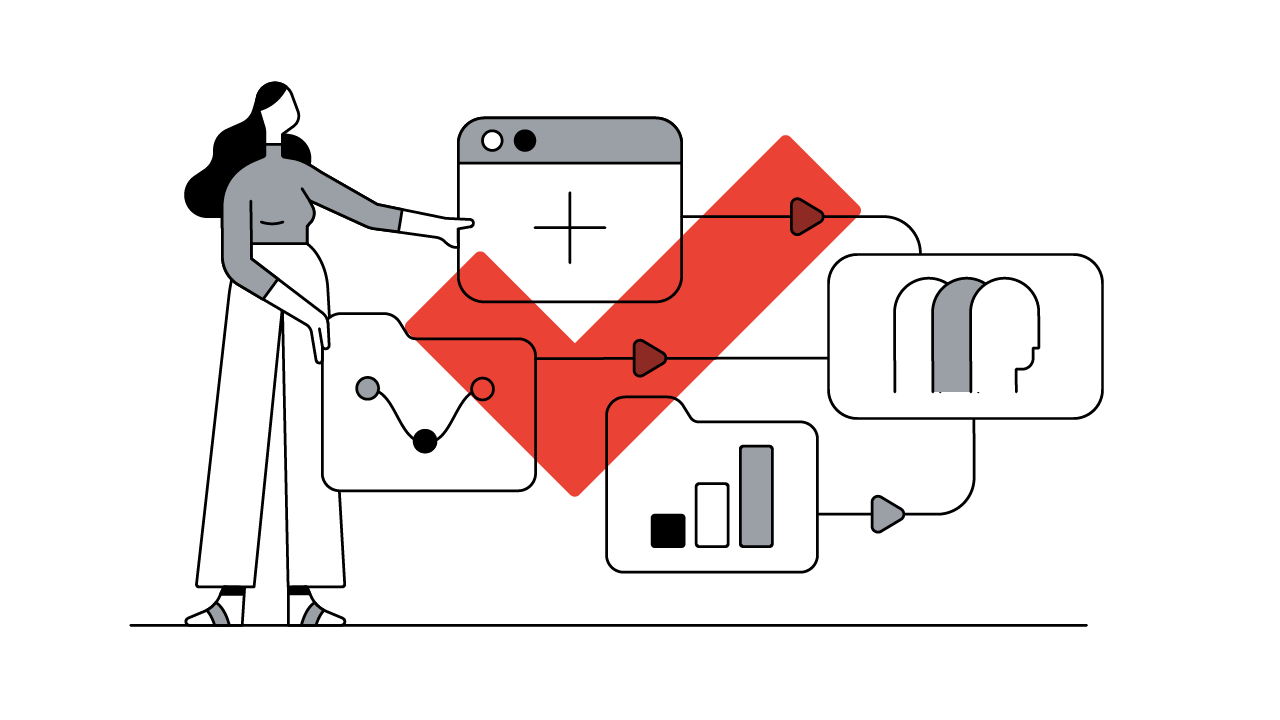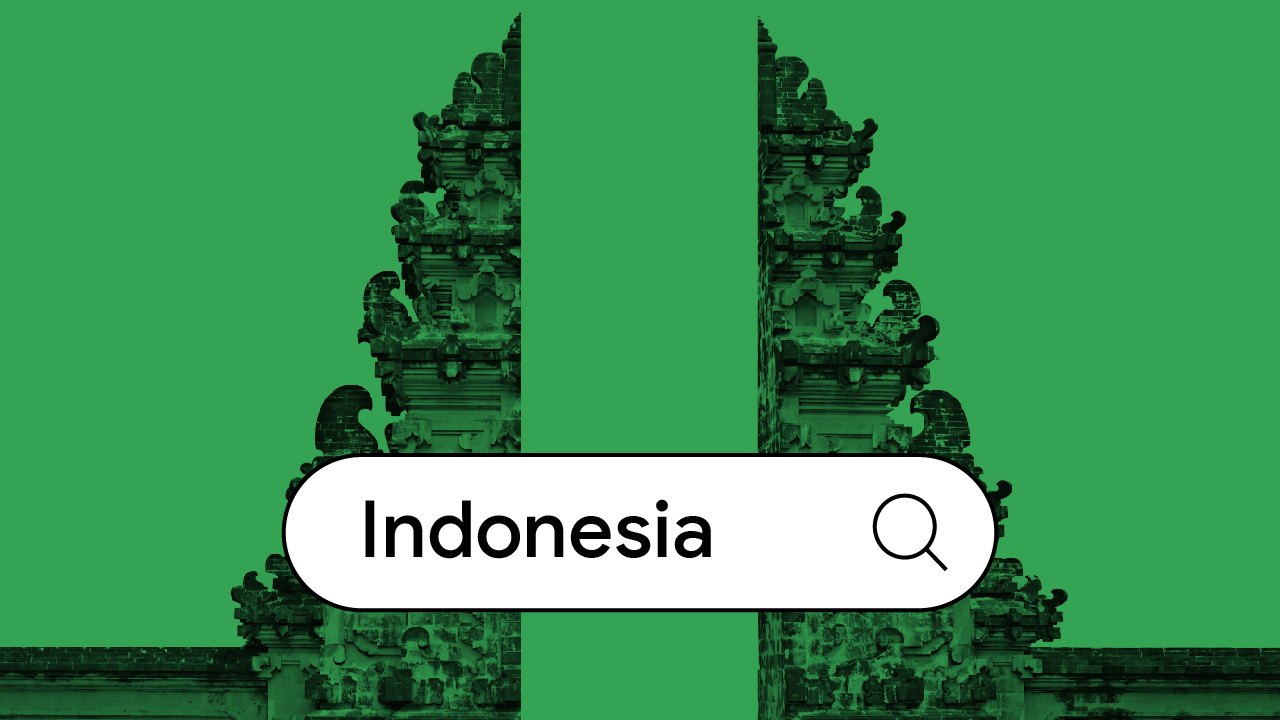What people search for online is constantly changing and it’s important that marketers keep up with the trend. Knowing what people are searching for in real-time enables us to better meet their needs. In recent times, changes in search trends have accelerated with the state of flux due to the pandemic: 15% of all daily searches contain new keywords marketers have never seen before. To ensure brands are always relevant to what people are searching for, marketers need to find nimble ways to optimize Search ads.
Responsive search ads (RSAs) create ads that adapt to and closely match what people are searching for at any time. The machine learning-powered system automatically generates ads with customized messages at scale, saving marketers time and effort, and delivers better results. Advertisers who switch from expanded text ads to RSAs, whilst using the same assets, see an average of 7% more conversions at a similar cost per conversion.
The optimized ads are created from the various headlines and descriptions provided by marketers. Machine automation orders them in optimal combinations and a relevant ad, based on audience search query, is served to the consumer. The smart system further tests various optimal ad combinations to learn which ones perform best for various queries, and delivers the best performing ads to potential customers.
To generate RSAs that drive results, however, the machine first needs quality input. Here are five RSAs best practices for creating impactful ads.
1. Write concise and distinctive headlines
The system optimizes headline-description combinations to provide fresh information in every ad. For each campaign, marketers can submit up to 15 headlines and four descriptions. Concise, memorable headlines work best. Each headline should highlight a new point, offer a fresh take, or say something different.
Each headline should also include key elements such as the brand name, product, relevant keywords, benefits offered, and a call-to-action. Here’s a hypothetical example of a headline that combines various key elements to promote a smartphone by BrandXYZ.

The key elements of a headline can also be combined in various ways to create distinct variations. For example, elements in the previous hypothetical headline can be combined differently to create a new headline that prompts consumer action: “For 4G and 5G connectivity, choose BrandXYZ Model1 smartphone.”
2. Use at least three popular keywords in the headline
When an ad headline includes search terms people use, it increases the ad's visibility. There's also a higher likelihood that people will click on it.
Before you begin crafting headlines, use Google’s search term report or keyword insertion tool to pick out at least three popular search terms to include in ad headlines. Headlines anchored on popular search terms are more likely to catch people’s attention.
One example is the RSAs campaign created by KFC Malaysia earlier on in the pandemic. The fast food chain saw a drastic drop in dine-in numbers due to pandemic-imposed restrictions. At the same time, the country witnessed a 16X spike in food delivery searches. To capitalize on the new search trend, the brand ran a responsive search ad campaign to drive direct orders through its online delivery site.
The brand used Google’s keyword insertion tool to identify popular food delivery search terms such as “food near me,” “KFC delivery,” and “KFC promotion,” which it used in its ads. This helped people see its ads when they were searching for online food delivery services. To boost the effectiveness of its campaign, KFC Malaysia also used Google’s Ad strength tool for RSAs to ensure the right keywords, and enough of them, are included, so that its Ad strength scores were excellent.
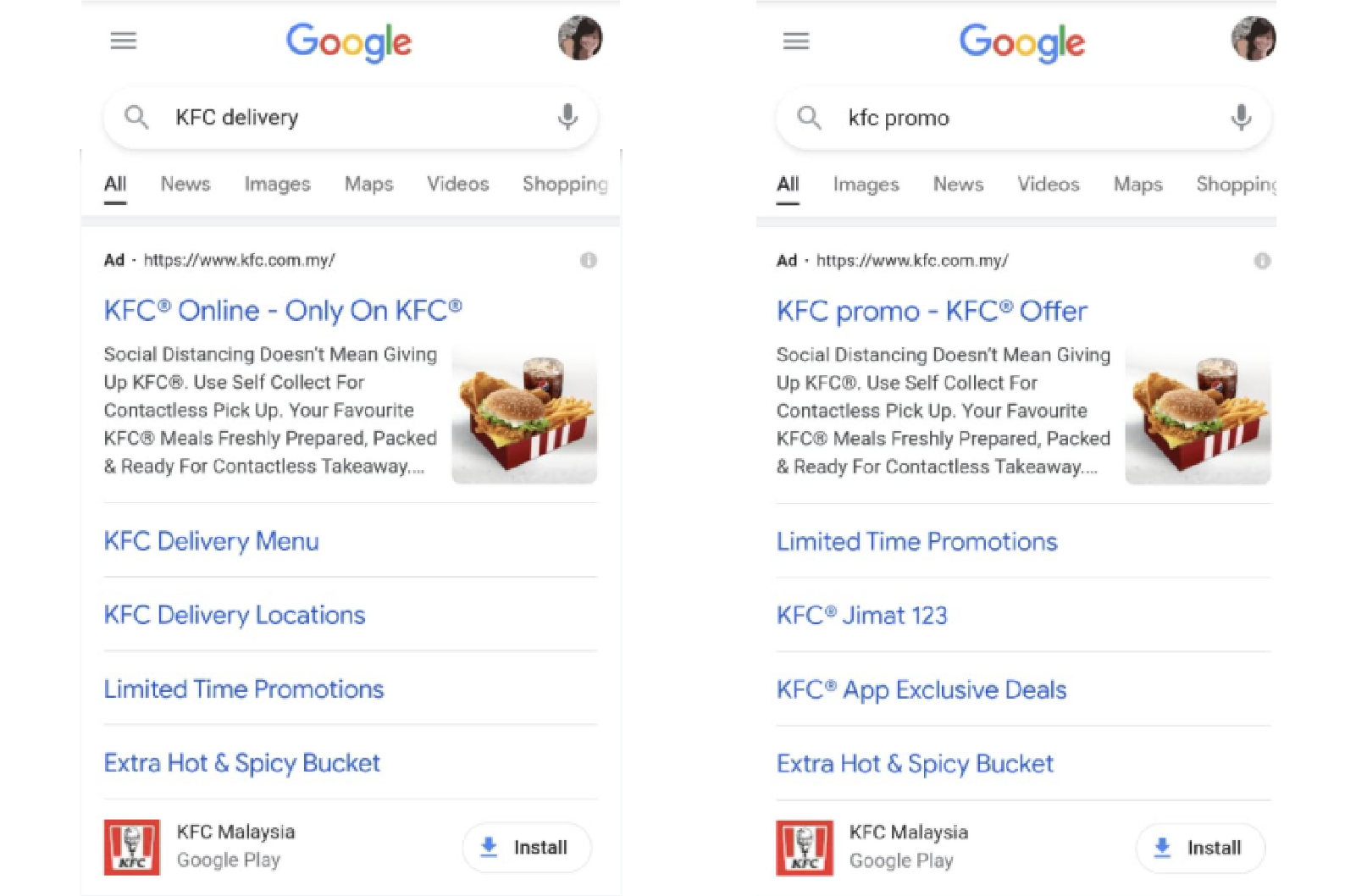
KFC Malaysia’s Senior Marketing Manager Hanim Mazam says, “The Ad strength tool helped our team measure the quality of our ad copy and provided us with easy-to-follow recommendations. We improved the quality of our ads and increased orders by 40%.”
Not only did its RSAs campaign attract 40% more direct orders in 2020 compared with 2019, the cost per order also dropped 6%. By driving direct orders through RSAs, KFC Malaysia was also able to keep its acquisition costs low.
3. Use call-to-action words
Motivate people to act when they read your ad. Don’t be shy to use action-oriented words in ad descriptions, or include call-to-action (CTA) phrases such as “contact us today” or “book now.” Ideally, the CTA should be in sync with the user journey design and lead people to the product or service. Strong CTAs act as clear signposts for what people need to do immediately after reading your ad.
4. Highlight unique selling points
Enticing hooks such as “50% off” and “free installments” might capture audience attention, but it’s also important to showcase the product’s unique selling point in the headline or description. Highlighting a product’s features and benefits helps people make an informed purchase decision.
Google’s agency partner I-DAC Bangkok uses this method to create excellent RSAs ad strength campaigns for their clients across various industries, including automotive. One such client is Mitsubishi Motor Thailand.
Ads for the Mitsubishi All New Xpander highlighted the car’s competitive price tag in the header and its roomy capacity in the description. Mitsubishi’s Search ads strategy led to more than 150% increase in test drive sign-ups, and a reduction of 60% for cost per conversion.
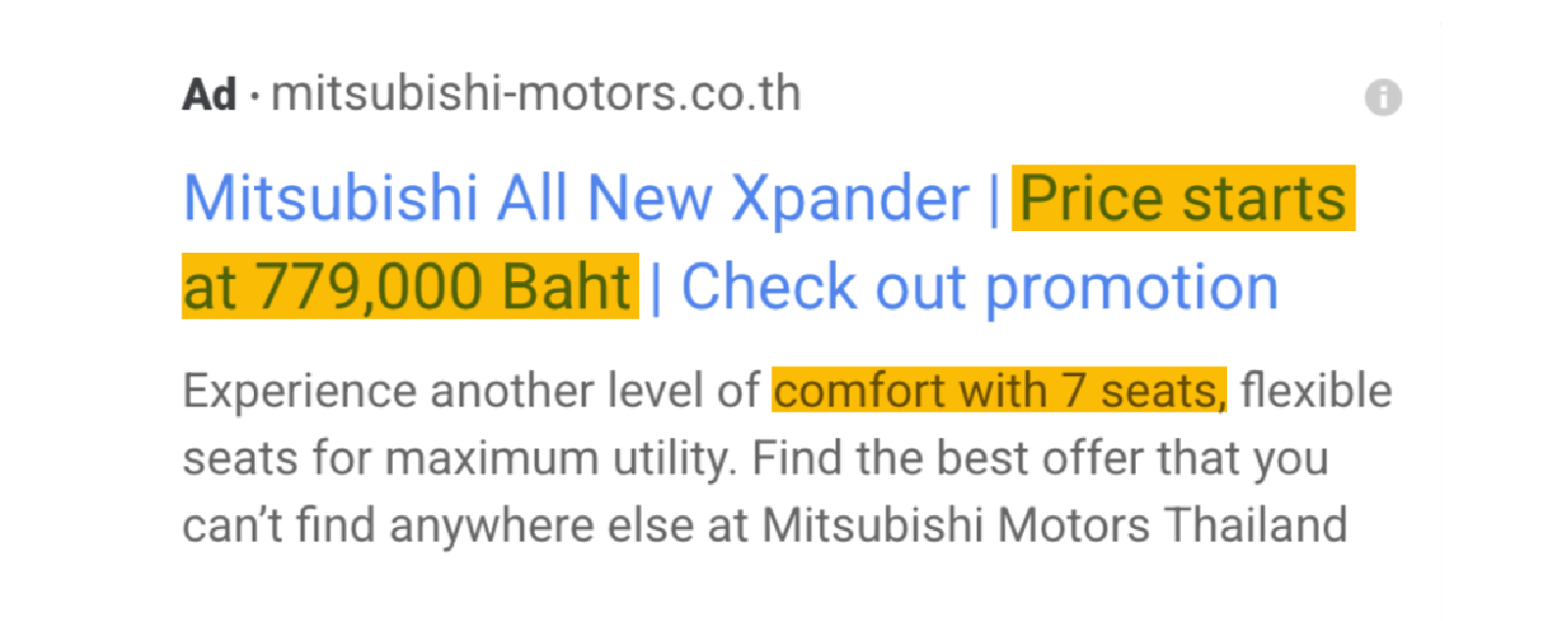
5. Pin key elements to optimize visibility
Although the system randomizes the headline-description combinations, marketers can pin headlines and descriptions to specific positions in Search ads. This keeps key elements such as the product name, price, or unique selling point highly visible in the headline and description. Marketers can also pin two or three descriptions to one position and assess which headline or description performs better to optimize the ads.
Starcom, Samsung Indonesia’s media agency, combined this tactic with other RSAs best practices in its Search ads strategy for the mobile phone giant. It pinned the product specifications and key features to the description. This ensured the RSAs always showcased the product’s key selling points.
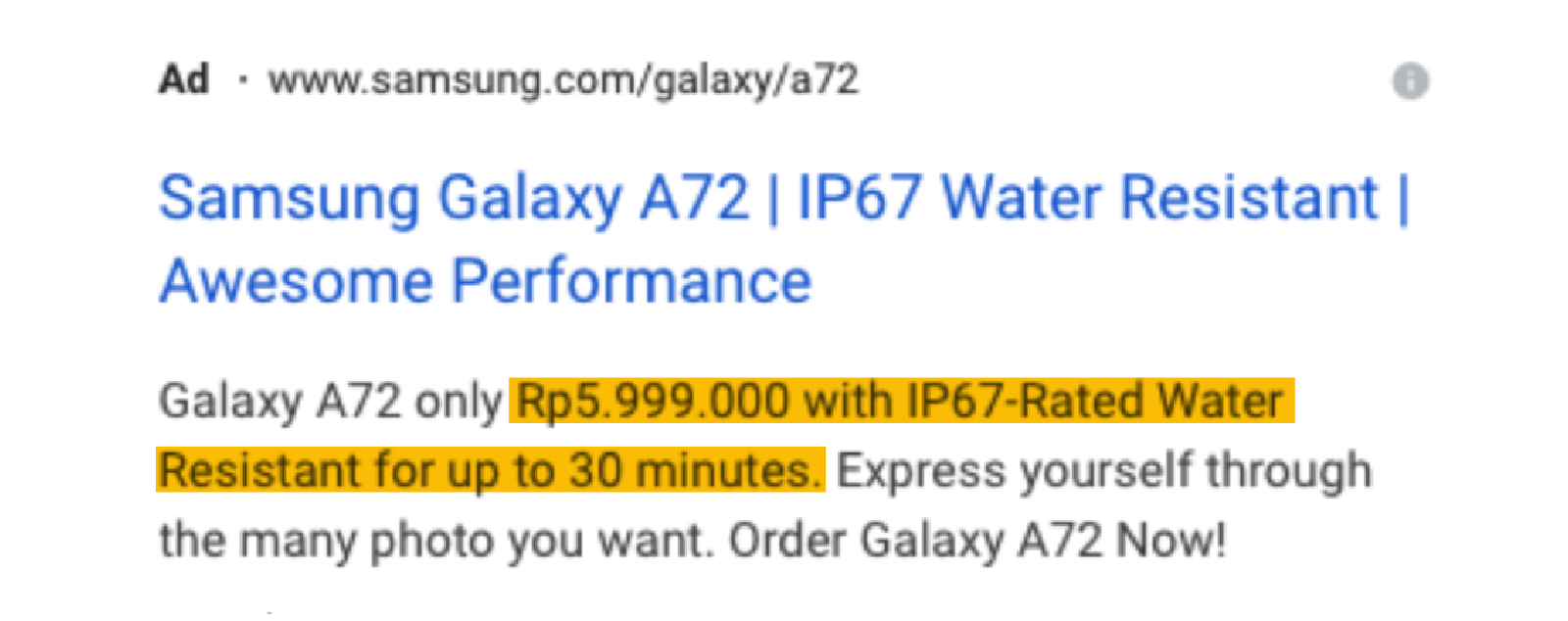
Starcom replicated this best practice in other campaigns for Samsung Indonesia. This not only saved them valuable man-hours optimizing ads but also helped them achieve a higher click-through-rate.

Starcom’s Media Performance Manager Azila Prabaningtyas Utami says, “Responsive search ads helped us to improve our Search campaign ad quality and performance, and more importantly, saved us time in optimizing and monitoring the campaign.”
In this fast-evolving consumer landscape, marketers can't afford to miss a beat. We need to keep in step with consumers and what they are searching for, to show up at the right place and time in their Search journey. Machine learning-powered tools such as RSAs help us optimize Search ads strategies for brands. And by following these five best practices for RSAs, we can continually improve and drive results.
